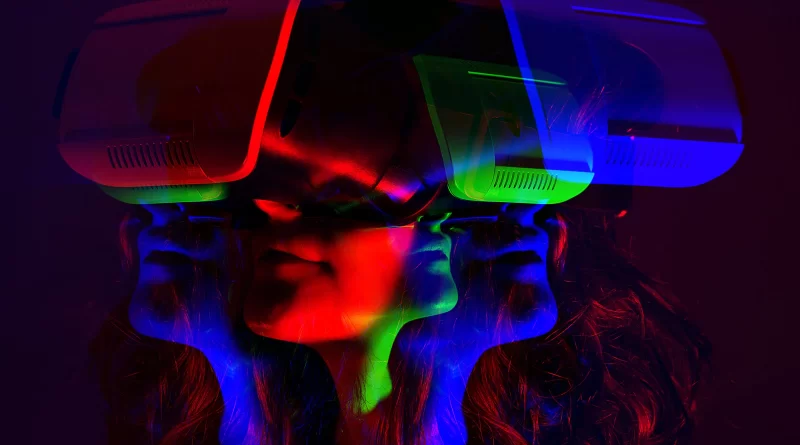The Top Ten Metaverse Examples That Everyone Should Be Aware of
Everyone is talking about the metaverse, but nobody is quite sure what it is. If we want to compile a list of platforms or experiences that best exemplify what it could be, it becomes somewhat challenging because of this. But if we interpret it to imply persistent, connected digital ecosystems that prioritize giving consumers immersive experiences, we can try to highlight certain initiatives, both current and upcoming, that stand out. Not all of the initiatives mentioned here incorporate cryptocurrencies, virtual reality, or decentralization. Although each of those technologies is expected to play some role in the metaverse, their inclusion isn’t necessarily necessary.
Therefore, the finest examples of today tend to be those that accomplish one or more of the fundamental components especially well, rather than focusing on examples that check all the boxes. Let’s take a look at the top 10 metaverses that everyone should be aware of are as follows:
1. Sandbox
The developers of this originally developed it as a mobile game, but in 2018 they moved it to the Ethereum blockchain, making it one of the first genuinely decentralized metaverse platforms. It has its own tools for building 3D objects, characters, cars, and whatever else one might imagine. These creations are then coined as NFTs and may be imported into other Sandbox worlds. The platform’s integrated marketplace also allows for the trading and sale of these NFTs. Land and assets are generated as NFTs, and like Decentraland, SAND, the platform’s native currency, is used for all transactions. Another popular platform for businesses looking to develop a presence in the metaverse is sandbox; its proprietors include HSBC, Warner Music, PwC, and Paris Hilton.
2. Second Life
Second Life was established by Linden Labs in 2003, long before Facebook (much alone Meta) even existed. Whether it truly counts as a metaverse is a matter of significant debate. This can be explained by the fact that, as the name suggests, it’s intended to allow users to live an alternate life as an alter-ego rather than post their present offline lifestyle. Some viewpoints claim that it was the first widely utilized online metaverse environment. Even while it might not meet all the criteria, it offers a useful illustration of an online community with millions of participants and an engaging, engaging user interface.
3. Meta Horizons (Facebook)
The fact that Mark Zuckerberg, the man behind Facebook, changed the name of his firm from Facebook to Meta showed how significant he saw the metaverse idea as being for the development of digital communication, sociability, and daily life. Horizon Worlds, a platform for virtual worlds, Horizon Venues, an event platform, and Horizon Workrooms are just a few of the initiatives that have emerged as a result thus far (virtual office). On any of these connected sites, users can create avatars to explore and interact with other users. Being forced to decide whether we choose a metaverse where ownership is concentrated under a firm owner or a more distributed, decentralized style of ownership and governance is an intriguing feature of the presence of Horizon.
4. Fornite
Of course, Fortnite is most recognized for being one of the most popular online games ever created. But the founders of Epic Games quickly discovered that the potential became slightly more game-changing as they gathered millions of active, tech-savvy gamers on their platform. Live music performances from international superstars like Travis Scott, Ariana Grande, and Billie Eilish are two key steps made to transform the world of Fortnite into a true metaverse. Brands including Telco 02, ITV, and Carrefour, a supermarket, have all employed creative mode to delve into the metaverse for the first time.
5. Decentraland
Decentraland is a genuine web3 platform that resembles a cross between a game, a marketing channel, and an experiment in building a digital, decentralized democracy. Some of the largest celebrities and brands in the world call it home, including Morgan Stanley, Coca-Cola, Adidas, Samsung, and Snoop Dogg. A Decentralized Autonomous Organization manages it (DAO). Currently, a down payment of at least $10,000 is required for anyone interested in purchasing a block of real estate there, with the most expensive going for well over $1 million. It includes a cryptocurrency called MANA of its own.
6. Roblox
Over 50 million people use the game site Roblox every day. Anyone can make their own gaming worlds, which exist within a connected metaverse and exchange elements like avatars and currencies, and even make money doing so. Companies like Nike, Forever 21, Gucci, Nascar, Ralph Lauren, and Vans have all used the platform to create virtual worlds where consumers can interact with their brands. It is skewed towards a younger audience than some of the other platforms mentioned above. Roblox allows anyone to develop their own game, but because they are all made to look and feel the same, if a person logs in and plays one, they will feel at home in all of them.
7. Nvidia Omniverse
Nvidia’s effort to create a creative metaverse platform for 3D design pros is called Omniverse. It builds on the Universal Scene Description (USD) language, which was developed by the animation studio Pixar and makes it possible for 3D objects and environments to be transferable between various toolkits. This enables, for instance, the cooperative design of characters using the tools that each creative is accustomed to using—face animators, clothes designers, etc. This kind of creative framework will become a crucial tool for studios developing metaverse material as 3D worlds get more intricate, immersive, and labor-intensive to create.
8. Pokemon Go
Before the excitement surrounding the idea of the metaverse grew, Pokemon Go debuted. However, augmented reality (AR), which is anticipated to be one of the pillar technologies that the metaverse will be constructed around, is the go-to “killer app” for it. Therefore, it serves as one of the best illustrations of how the metaverse will involve the fusion of the physical and virtual worlds. By allowing real-world companies to start advertising and promotion efforts within the poke-verse, its developer Nintendo further dissolved the lines between the two worlds.
9. The Sandpit
This was once a smartphone game, but in 2018, its developers moved it to the Ethereum blockchain, making it one of the first genuinely decentralized metaverse platforms. Anybody can design 3D objects, characters, cars, or anything else using its own object creation tools, which are then minted as NFTs and imported into other Sandbox worlds. Through the platform’s integrated marketplace, these NFTs can likewise be bought, sold, and exchanged. Similar to Decentraland, assets, and land are generated as NFTs, and transactions are carried out using SAND, the platform’s native currency. Another popular platform for businesses wishing to develop a presence in the metaverse is Sandbox; whose landlords include HSBC, Warner Music, PwC, and Paris Hilton.
10. Otherside
It has only recently been disclosed, and not much is known about it, but Yuga Labs—the company behind the wildly popular Bored Ape Yacht Club (BAYC) series of NFTs—is working on a metaverse project. By selling the initial group of “deeds” to appear on the platform, the firm was able to raise $285 million in April. Despite the paucity of details regarding how Otherside will seem when it launches, the developers advise people to “think of it as a metaRPG (role-playing game) where the players own the universe, your NFTs can become playable characters, and thousands can play together in real-time.”




